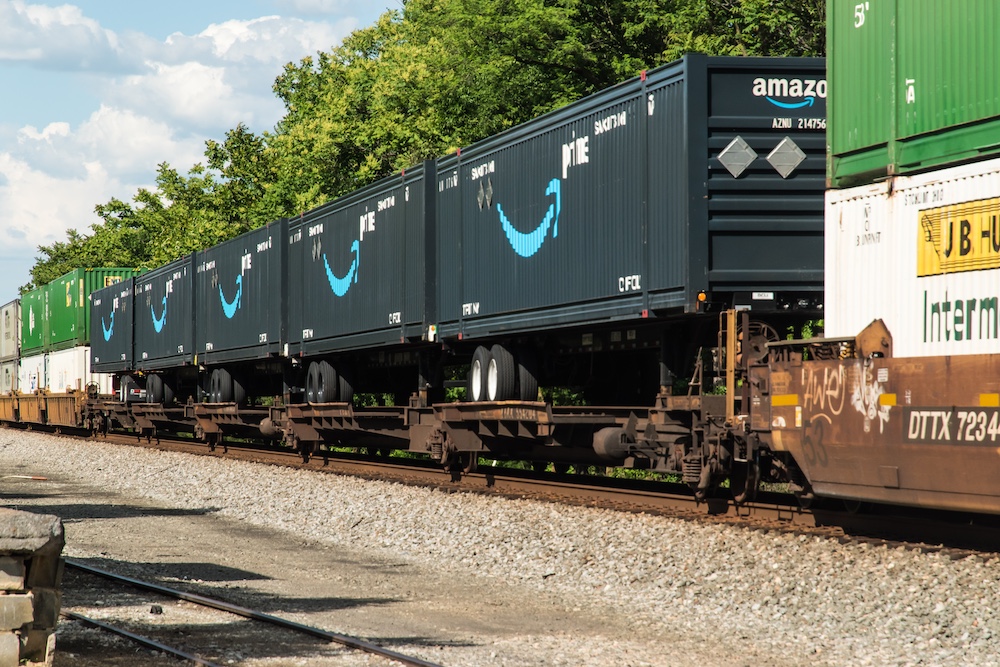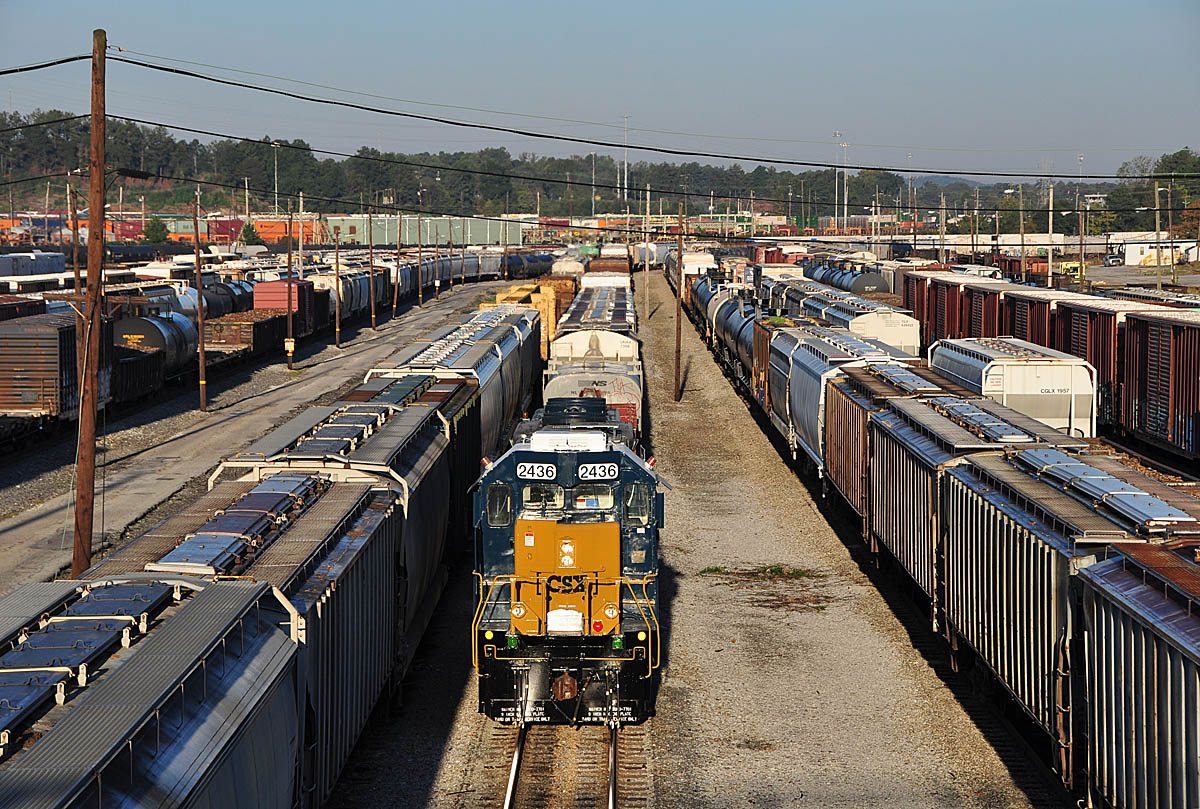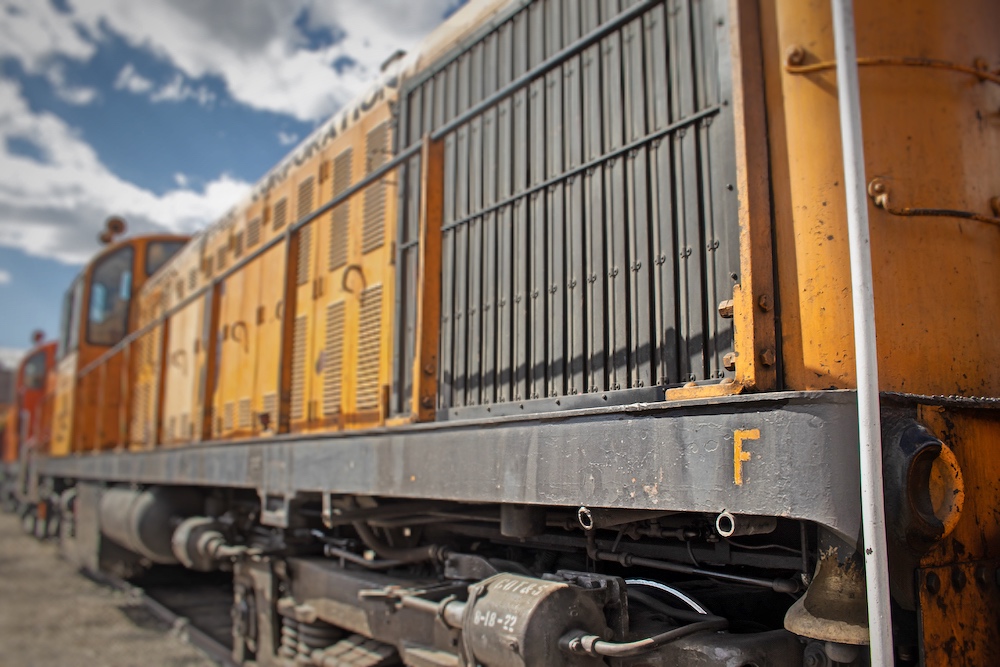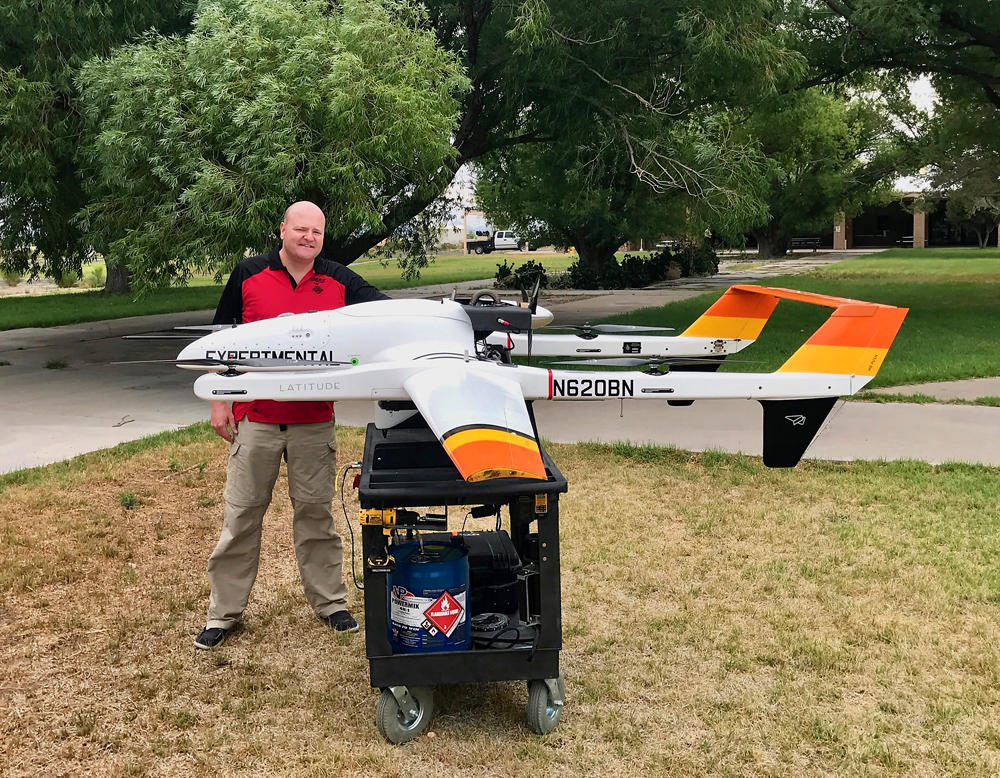
Amazon, the Internet shopping giant, is also intermodal’s uncommon carrier. To understand what makes it different, a brief overview of railroad intermodal operations is in order.
In the early days of large-scale U.S. railroad intermodal operations, described more accurately at that time as “Piggyback”, or TOFC (Trailer On Flat Car), the identification of these vehicles typically consisted of railroad company road names. Containers, as such, were unusual, although the Flexi-Van system used by the New York Central (as well as a few other carriers) to overcome clearance problems associated with the trailers was a notable, although minority, exception.
Fast-forwarding to today, containers, not trailers, provide the vast majority of intermodal traffic. Modern containerized shipping was first established in the ocean shipping trade. It eventually became apparent that it was more efficient to move the containers directly into interior destinations beyond the ports, rather than transloading their cargo into railroad cars at the coastal locations.
The advent of double-stack technology only improved the economics of containerized traffic versus Piggyback/TOFC, and eventually the use of this type of equipment spread into domestic freight shipping, as well. However, domestic containers grew in volume versus ocean containers, which typically were either 20 or 40 feet in length. Taking advantage of looser restrictions on container and trailer length on highways in the U.S. allowed the use of containers of considerably greater volume; today, 53-foot containers are generally the norm in this sector of the market, matching the maximum length of highway trailers.
Probably the biggest change, particularly from a visual perspective, however, is the general lack of railroad nomenclature on the containers. Today, either so-called “3PLs” (Third-Party Logistics firms) or major trucking companies dominate. A major event in this process occurred when Santa Fe’s President Mike Haverty convinced J.B. Hunt trucking to partner with the railroad via taking J.B. Hunt himself for a business car ride on one of the ATSF’s intermodal trains in 1989; the results have been visible nationwide since then.
Both United Parcel Service and FedEx, the latter more recently, are also prominent current users of intermodal rail. These two entities are often categorized as “Integrators,” or “Integrated Carriers” since they incorporate multiple modes including both surface (rail and motor vehicle/truck) and air. Historically, UPS made only modest use of air service prior to the 1980s, while FedEx (then named Federal Express) began service using the air mode exclusively for line haul, with motor vehicles utilized for pickup and delivery at each end of a shipment’s journey. More recently, as FedEx has expanded into the surface transportation market, it also has begun to make use of rail intermodal, as well.
Thus far, all the participants can be described as common carriage haulers. In essence, they accept freight from a variety of shippers (the “common carriage” part) and combine these shipments to achieve economies of scale, in the process of transporting goods owned by other entities across their networks.
Recently, a new, and somewhat novel entity has appeared on the rail intermodal scene, in the form of Amazon. From trackside, this appears to be little different from containers and trailers identified as serving J.B. Hunt, Schneider, Hub Group, FedEx, UPS, etc. except for the brand names and paint schemes.
However, all of those companies are hauling freight belonging to someone else. As described previously; they are simply conveying traffic between shipper and customer, without having any economic interest in what the containers are conveying. Amazon, however, owns (or, in some cases, is hauling goods for entities including individual sellers affiliated with Amazon) what’s inside the containers, and will also act as an integrated carrier in providing delivery service to the customer following its intermodal ride.
As most of us know, Amazon is a one-click way for consumers to purchase an incredibly wide spectrum of goods conveniently, generally at an attractive price. Amazon was not the first to accomplish this, however; clothing purveyors L.L. Bean and Lands End, for example, did this even before the advent of the Internet, via printed catalogues and 1-800 telephone service ordering. (For that matter, even the basic principles of internet shopping were in place more than 100 years ago, in the form of the Sears catalogue, with the postal office, and on occasion, telegraph service used for ordering, and railway express combined with local delivery services ranging from actual horses to internal combustion horsepower providing the “last mile” fulfillment functions.)
In effect, Amazon utilizes the principle of “vertical integration” on both the sales and fulfillment sides of the transaction. In contrast, L.L. Bean, for example, handles the customer transaction, and then turns the logistics of fulfillment over to others. One reason for adopting the vertical integration business model is the ability to control the quality of the transaction, from start to finish.
Bye-bye middleman
Another, more powerful, incentive can be described as the transfer of profits from one entity to another, i.e. “disintermediation,” or, in more colloquial terms, “bye-bye middleman.” Warehousing, line-haul, and local pickup and delivery all continue to be involved. Guess what? Amazon is active, under its own name, in all of these processes.
Until recently, Amazon used other providers to provide rail intermodal transport for them. Not surprisingly, the truck lines, integrators, and 3PLs all expected to make a profit on these services. With Amazon moving increasingly to its own branded services, traffic, revenue levels, and profitability of the historic providers likely will be reduced.
For the moment, everyone seems to be coexisting on reasonable terms in the rail intermodal customer sphere; it’s helpful that the “Business to Consumer” market via the Internet is still growing. This rising tide is effectively raising everyone’s containers, but that is probably not a reliable solution for non-Amazon participants in the long run.
By the way, Amazon, at least to date in my experience, is essentially a user of containers for rail transport rather than TOFC. Thus, my surprise at the scene depicted in the photograph, of Norfolk Southern intermodal train 27A at White Post, Va., on May 30, 2024 — not just a single outlier container already on a chassis, but a cluster of five! Maybe an efficient way to transfer chassis equipment to a different location? Or is Amazon trying for something different in service levels?
This is an interesting time in the rail intermodal space; stay tuned!













Superb article! Exceptionally clear & well-written. Shows very broad perspective and doesn’t leave the reader with questions. I developed college textbooks (geology) for years, and this is the caliber of article that belongs in a thorough, accessible text.
Thanks Fred; I appreciate the compliment!
I’ve seen Amazon containers on the CSX A-Line in South Carolina.